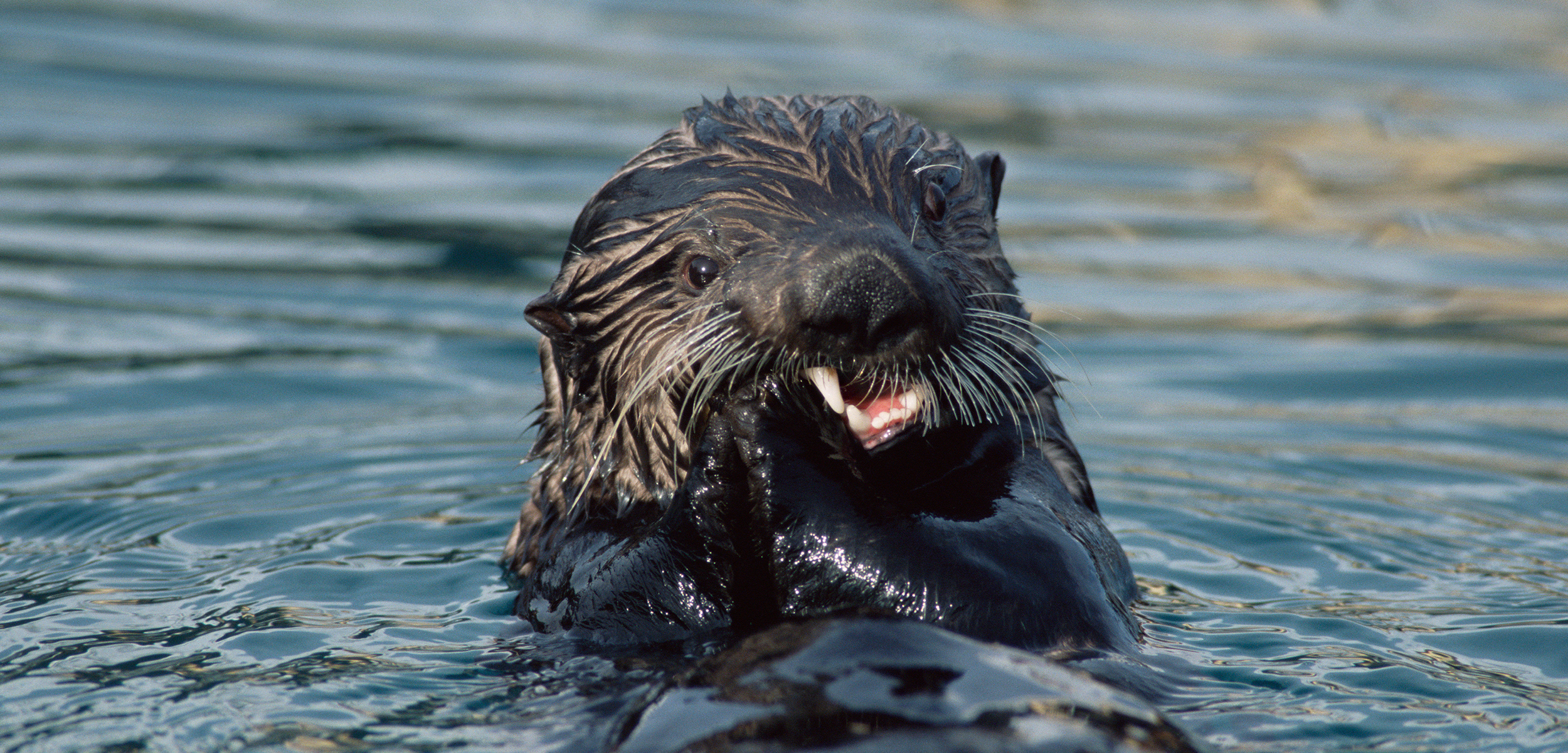Alaska’s Sea Otters Have Individual Eating Habits
Sea otters don’t all eat the same things—which makes it more difficult to deduce their effect on prey species like crabs and clams.
Article body copy
As sea otter populations rebound in the northeast Pacific, shellfish farmers, crab fishers, and others are raising concerns about how their voracious eating habits—which can see them consume approximately a quarter of their body weight every day—might affect the bounty of the ocean. Scientists have been investigating the effect sea otters are having on key shellfish populations, hoping to better predict the outcomes of ongoing reintroduction efforts, which began in the 1960s.
A recent study, however, adds a wrinkle to that effort. As University of Alaska Fairbanks graduate student Nicole LaRoche and her colleagues have shown, there are significant differences in eating patterns from one sea otter to the next.
Dark, frigid Alaska winters make the year-round study of sea otter eating habits difficult. But LaRoche and her team overcame this by watching otters forage in the warmer months, then measuring changes in the carbon and nitrogen isotopes of otter whiskers collected by the US Fish and Wildlife Service. Agency officials routinely gather whiskers for scientific use when capturing sea otters or retrieving carcasses. Because sea otter whiskers tend to grow at a steady rate, measuring changes along the length of a whisker can give scientists a way to see if what otters are eating changes throughout the winter.
The researchers weren’t able to match warm-weather observations with the winter whisker measurements for specific sea otters, but they did uncover individual dietary variance.
Through warm-weather observation, LaRoche and her colleagues found that sea otters rely on crabs, sea cucumbers, mussels, snails, sea urchin, and varying types of clams. Butter clams, in particular, seem to be a favorite among the foraging otters they observed. Sea otters “get a big bang for their buck on them,” says LaRoche. Butter clams “are easy to dig for, they’re not going to swim away, and they get a lot of calories for each one.”
It’s tempting to interpret these individual differences between what sea otters are consuming as eating preferences, but LaRoche says competition with other otters and the availability of prey also play a role in dictating which otter eats what.
Previous research has shown that sea otter eating habits can change as a regional population grows, says Tim Tinker, a wildlife biologist with the United States Geological Survey who was not involved in the study. When sea otters spread to a new area, juvenile males arrive first and seek out large, calorie-dense prey like Dungeness crabs. As females and then pups add to a growing colony, the otters begin to eat a wider variety of prey. That means sea otters’ early impact on some prey species may be high, but it should level off over time.
“What [this] paper does,” Tinker says, “is dig a little bit into how diets begin to diversify.”
LaRoche hopes that new understanding of sea otters’ clam consumption in southeast Alaska, in particular, will bring attention to the need to balance the demands of hungry otter populations with those of subsistence hunters who also gather clams.
“People tend to think about sea otters affecting commercial fisheries like crab and urchin, which they do,” says LaRoche by email. “But I think that more focus should be on personal use, specifically subsistence use. Commercial rigs, specifically crab, have the ability to fish far deeper than otters generally dive, but subsistence use is generally in the same region that sea otters will also be feeding.”
Despite the difficulties that may arise from sea otters’ rebounding population, LaRoche hopes researchers will continue to suss out the nuances in their interactions with various species, and hopefully find new ways to help sea otters, their prey, and people coexist.

